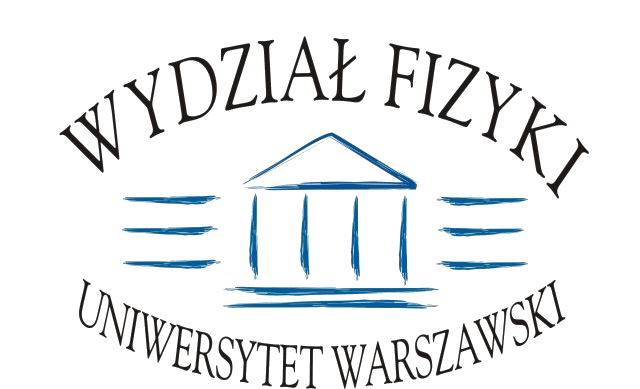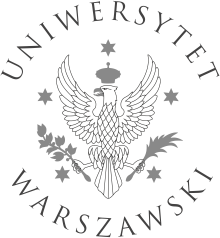Seminarium Optyczne
2006/2007 | 2007/2008 | 2008/2009 | 2009/2010 | 2010/2011 | 2011/2012 | 2012/2013 | 2013/2014 | 2014/2015 | 2015/2016 | 2016/2017 | 2017/2018 | 2018/2019 | 2019/2020 | 2020/2021 | 2021/2022 | 2022/2023 | 2023/2024 | 2024/2025 | 2025/2026 | Seminarium na YouTube
2025-03-13 (Czwartek)
Agnieszka Siemion (Politechnika Warszawska)
THz optics and optical elements
In recent years, the increased research has been conducted in the field of terahertz (THz) optics and imaging. The description that explores the landscape of THz optics, focusing on its achievements, current challenges, and prospects is given in this lecture. THz radiation, characterized by wavelengths considerably longer than visible light, induces substantial diffraction effects, profoundly impacting its behavior and imaging capabilities with optical elements. Moreover, the high coherence exhibited by various THz sources facilitates precise wave manipulation. However, it also introduces unwanted interference effects, which are challenging to suppress. Moreover, in many cases, THz optical systems operate within the near-field diffraction zone, which has its peculiarities.The advancement of THz optics is closely related to exploring various materials and manufacturing techniques. Different materials, ranging from dielectrics to semiconductors, exhibit excellent optical properties in the THz range. Furthermore, innovative manufacturing methods such as lithography, additive manufacturing, and metamaterial engineering play crucial roles in developing novel THz optics.This lecture highlights various achievements, current challenges, and promising avenues in the field of THz optics. Emphasizing its versatile applications and the role of material science and manufacturing innovation underscores the transformative potential of THz technology in shaping future advancements.
2025-03-06 (Czwartek)
Kamil Gradkowski (Tyndall National Institute, Ireland)
Photonics packaging and assembly – a grand challenge
Photonic devices are becoming more ubiquitous in our everyday lives. Starting from usage in data- and telecoms, they are now penetrating into biomedical and sensor markets with numerous emerging technologies being actively researched in fields such as quantum computing, space communications, as well as consumer diagnostics or augmented reality systems. As applications become more abundant, the demand for photonic devices grows, outpacing the available manufacturing base. Photonics packaging is an engineering science that turns disparate photonic integrated circuits (PICs) and electronic chips into functional optoelectronic devices. Current packaging methods and processes are insufficient to support the growth of the numerous and often dissimilar markets. The seminar will introduce strategies for supporting the future of photonics, researched and developed in Photonic Packaging Group at Tyndall National Institute in Ireland. These methods target scaling of device manufacturing from the current serial- to the new parallel, high-volume assembly. One of them is a heterogeneous method for integration of a light-source into the PIC which is important of simplification of a system design. Second topic covers a method for a contactless, direct, and pluggable optical interconnect between a fibre network and the photonic device. The final topic targets the automation of packaging processes as well as new substrate materials that enable wafer-scale assembly of photonic devices.
2025-02-27 (Czwartek)
Maks Walewski (IFT UW)
Quantum control of ion-atom collisions beyond the ultracold regime
Tunable scattering resonances are crucial for controlling atomic and molecular systems. However, their use has so far been limited to ultracold temperatures. These conditions remain hard to achieve for most hybrid trapped ion-atom systems—a prospective platform for quantum technologies and fundamental research. Here, we measure inelastic collision probabilities for Sr+ + Rb and use them to calibrate a comprehensive theoretical model of ion-atom collisions. Our theoretical results, compared with experimental observations, confirm that quantum interference effects persist to the multiple-partial-wave regime, leading to the pronounced state and mass dependence of the collision rates. Using our model, we go beyond interference and identify a rich spectrum of Feshbach resonances at moderate magnetic fields with the Rb atom in its lower (f = 1) hyperfine state, which persist at temperatures as high as 1 millikelvin. Future observation of these predicted resonances should allow precise control of the short-range dynamics in Sr+ + Rb collisions under unprecedentedly warm conditions.
2025-01-23 (Czwartek)
Piotr Deuar (IF PAN)
Scalar field dark matter: a BEC with a galaxy-size wavelength
I will introduce the topic of scalar field dark matter, which is actually quite relevant for lovers of Bose quantum gases and classical wave fields, and then tell a bit about our preliminary investigations with collaborators at Newcastle University into the nonequilibrium dynamics of a dark matter halo.
2025-01-16 (Czwartek)
Emilia Witkowska (IF PAN)
Spin chains and squeezing: simple theoretical results
Entanglement in systems with single-particle control is a well-established resource of modern quantum technology. Spin-squeezing is a great example of such. Applied in an optical lattice clock it can reduce the statistical uncertainty of spectroscopic measurements.During the seminar, I will consider the dynamic generation of spin squeezing in spin chains. I will show how anisotropic interactions and inhomogeneous magnetic fields generate scalable spin squeezing when their magnitudes are sufficiently small, but not negligible. The simple models for collective spin will be shown to describe the dynamics effectively. I will also discuss the effect of nonuniform filling caused by hole doping, at a microscopic level, demonstrating their limiting role in the dynamics and scaling.
2024-12-19 (Czwartek)
Joanna Jankowska (Wydział Chemii UW)
Unidirectional molecular rotary motor with remotely-switchable rotation direction
Light-driven rotary motors allow direct transformation of light energy into unidirectional rotary motion at the nanoscale, giving rise to countless emerging applications in molecular engineering. The key feature enabling the unidirectional rotation and controlling its direction is the motor chirality, an inherently chemical factor, hard to modify postsynthetically. Here we propose a new molecular rotary motor architecture, E-motor, in which the motor operation direction can be switched in situ, without the need for chemical modification of the system structure. This effect is achieved by application of an external electric-field pulse, and is intended to provide means for chirality control in motors deposited on a surface. Our study relies on quantum-chemical calculations and nonadiabatic molecular dynamics simulations performed for a specifically-tailored system, PFCN, designed to provide illustration for the proposed new motor type. We show that the model system’s chirality and, hence, its operation direction, depends on orientation of a covalently bound polar switching unit, which can be controlled with an external electric field. At the same time, the proposed system manifests all characteristic photophysical properties of a unidirectional molecular motor, and its set chirality is preserved, i.e., it is thermally and optically stable during the regular motor operation in the absence of the electric field.
2024-12-12 (Czwartek)
Piotr Wasylczyk (IFD UW)
How to pursue you dreams in the free time at FUW, feel great... and fail
I will present a few projects in biomedical engineering – not necessarily directly optics-related – that used the knowledge and expertise of the FUW Division of Optics and ended with different outcomes.
2024-12-05 (Czwartek)
Mariusz Gajda (IF PAN)
From quantum droplets to supersolids of ultracold atoms
Ultracold atoms, since the first achievement of Bose-Einstein condensation in 1995, have proven to be an exceptionally versatile platform for studying a wide range of physical phenomena. These include nonlinear effects, superfluidity, quantized vortices, quantum magnetism, many-body correlations, localization effects, or exotic Hubbard systems, to name just a few. The rich internal structure of atoms and their sensitivity to external fields, both static and time-dependent, provide a unique opportunity to tune interatomic interactions, vary the effective dimensionality of the systems, and shape the external potentials experienced by them.In this talk, I will focus on the role of quantum fluctuations, which can stabilize ultracold systems by preventing their collapse and enabling the formation of self-bound systems known as ultradilute quantum liquid droplets. I will also describe the concept of supersolidity—systems that simultaneously exhibit properties of both superfluids and solids. Finally, novel supersolid systems, particularly those based on mixtures of ultracold bosonic and fermionic species, will be discussed.[1] Quantum Bose-Fermi Droplets, D. Rakshit, T. Karpiuk, M. Brewczyk, M. Gajda, SciPost Phys. 6, 079 (2019),[2] Self-Bound Bose-Fermi Liquids in Lower Dimensions, Debraj Rakshit et al. 2019 New J. Phys. 21 073027,[3] Supersolidity of dipolar Bose-Einstein condensates induced by coupling to fermions, M. Lewkowicz at al., arXiv:2401.05890.
2024-11-28 (Czwartek)
Mikołaj Rogóż (IFD UW)
Liquid crystal elastomers: from fabrication to application
Liquid crystal elastomers (LCEs) are elastic polymers capable of reversibly changing shape under external stimuli. The type of deformation they exhibit is determined by the molecular order of the material, which can be achieved through various fabrication methods. These unique properties make LCEs ideal candidates for actuators in mechanics and soft robotics, applicable across different scales and environments. A significant challenge in LCE research remains the development of efficient fabrication techniques, which include methods such as direct laser writing, polymerization in sandwich-like cells, and sequential polymerization.In my talk, I will focus on two key aspects of LCE research: fabrication methods and their applications. First, I will introduce a novel technique for creating self-growing microstructures on optical fiber tips [1]. This approach enables the production of durable, microscale objects with well-oriented materials and offers a cost-effective, straightforward process. I will also discuss polymerization in sandwich-like cells [2], a widely utilized method inspired by techniques established in liquid crystal research over decades.The second part of my talk will explore applications of LCEs in soft robotics and micromechanics. I will present a sunlight-powered, self-oscillating system with potential applications in solar energy harvesting. Experimental results using natural sunlight and its artificial equivalent demonstrated oscillations with frequencies in the single-Hz range. Lastly, I will describe a method for optimizing swimming robots by combining optimization algorithms with experimental feedback. This approach, which employs genetic algorithms and particle swarm optimization, has enabled centimeter-scale underwater swimmers to achieve speeds of up to 10 cm/min.[1] M. Zmyślony, K. Dradrach, J. Haberko, P. Nałęcz‐Jawecki, M. Rogóż, and P. Wasylczyk, ‘Optical Pliers: Micrometer‐Scale, Light‐Driven Tools Grown on Optical Fibers’, Adv. Mater., vol. 32, no. 33, p. 2002779, Aug. 2020, doi: 10.1002/adma.202002779.[2] M. Rogóż, J. Haberko, and P. Wasylczyk, ‘Light-Driven Linear Inchworm Motor Based on Liquid Crystal Elastomer Actuators Fabricated with Rubbing Overwriting’, Materials, vol. 14, no. 21, p. 6688, Nov. 2021, doi: 10.3390/ma14216688.
2024-11-21 (Czwartek)
Mateusz Bocheński (IFD UW)
Ultracold mixtures of cesium with potassium isotopes
Studies of fundamental physical phenomena with ultracold atoms, from superfluidity, through quantum simulators, to degenerate gases of polar molecules, require exquisite knowledge of collisional properties of atoms used in experiments. Theoretical predictions are usually based on scarce spectroscopic data and even for molecules like KCs, which have been extensively studied in hot vapors, theoretical understanding of ultracold properties of these molecules is rarely satisfactory. This necessitates the development of efficient cooling methods and extensive experimental studies of fine details of interactions between atoms to provide data for theoretical modeling.In the first part of the talk I will introduce our state-of-the-art experimental setup designed to study ultracold mixtures of cesium and potassium. The versatility of the apparatus will be demonstrated by individually cooling 39K, 40K, 41K, and 133Cs atoms as well as their mixtures. I will compare these findings with state of the art results from other research groups and highlight our achievement of the world’s first 39K-40K and 41K-133Cs mixtures. The second part of the talk will focus on Feshbach resonances spectroscopy of 39K-133Cs and 41K-133Cs mixtures. For 39K-133Cs, we provide the first independent verification of the 2017 results obtained by the group of H.-C. Nägerl (University of Innsbruck). The Feshbach spectrum of 41K-133Cs is demonstrated for the first time, showing significant disagreement with theoretical predictions. These results are vital for a deeper understanding of the collisional properties of cesium and potassium mixtures and are a prerequisite for advancing toward the formation of ultracold polar ground state molecules of KCs.
Stron 2 z 3






